If you find yourself without a job due to the recent economic downturn and consequently facing serious financial difficulties, you may have begun thinking about filing bankruptcy. However, you likely have numerous questions about the types of bankruptcy relief available and which type best addresses your needs.
As FindLaw explains, Chapter 7, a straight liquidation procedure, accounts for 71% of all individual bankruptcies. Chapter 13, a reorganization procedure, accounts for the other 29%. Both types give you an automatic stay period during which your creditors cannot harass you for debt collection.
Chapter 7 Fundamentals
You must meet strict income guidelines in order to file Chapter 7. On the other hand, Chapter 7 generally takes only about six months to complete. At its end, the court discharges virtually all of your consumer debts, including the following:
- Credit card debts
- Medical bills
- Debts currently with collection agencies
- Past due utility bills
If saving your home from foreclosure or your vehicles from repossession represents your main concern, you likely will want to file Chapter 13 instead. While Chapter 7 can forestall foreclosures and repossessions, it seldom can stop them.
Chapter 13 fundamentals
Chapter 13 gives you the opportunity to meet with your creditors and renegotiate the debts you owe them. You then work with your attorney and possibly the bankruptcy trustee to devise a plan whereby you pay off, or at least stay current with, your secured creditors.
Once the bankruptcy judge approves your plan, he or she then grants you three or five years in which to make monthly payments to the trustee who, in turn, distributes the money to your creditors mentioned in your plan in the amounts specified therein. At the end of your Chapter 13 bankruptcy period, the judge discharges any debts not covered by your plan.
